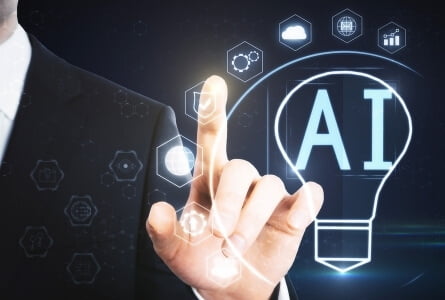4 Steps to Scaling up with DevOps for AI
What does it take to effect significant change? This requires a robust blend of rapidity, quality, scalability, and adaptability. Like how DevOps is bringing this to computer programming, you can leverage DevOps to accelerate the delivery of AI models.
The next wave of the strategic edge is predicted to emerge from developing technologies like artificial intelligence (AI) and the requirement for every business to migrate to the cloud.

Overnight, the adoption rate of modern digital technologies has accelerated from years to weeks or even months, which is possible by hiring an AI-managed services provider. The number of automated processes and artificial intelligence solutions is rapidly expanding to facilitate this transition. Therefore, DevOps concepts for AI are critical to successfully integrating AI into your organization’s DNA.
How DevOps for AI can help
When used to artificial intelligence, DevOps enables large-scale AI by operationalizing AI systems from design to production. DevOps for AI ensures that the proper processes for delivering AI are in place and can provide the flexibility and “fail fast” attitude required in these times of continual change and technological development. Essentially, DevOps will enable continuous delivery, deployment, and monitoring of models by implementing the following:
- Speed: Accelerate time-to-market by eliminating non-value-added tasks associated with AI service providers.
- Quality: Accelerate dataset cleaning and promote continuous learning to increase the quality of AI models.
- Stability: Ensure deployed AI models’ reliability, strength, and accuracy.
- Scalability: Anticipate scaling issues and ensure that AIAS service companies offer models that can expand on demand.
How to make it repeatable
New protocols for AI model operationalization must be followed to fulfill the need for AI implementations. However, effective practices for delivering AI are constantly evolving. DevOps principles address this issue by providing a repeatable yet adaptive method for continuously maturing your technology with AI service providers through change.
One can divide the process of operationalizing AI with DevOps methods into four stages:
Stage 1: Data Preparation: Preparing the appropriate datasets for developing AI models is a critical first step, as model accuracy is directly proportional to the quality and size of the training dataset. Typically, data preparation—data extraction, data mining, data labeling, and data validation—has been a time-consuming and manual process that consumes approximately 70% of data scientists’ time.
DevOps for AI automates these stages and allows data pipelines to manage large amounts of data. This increases the quality and size of datasets and frees up statisticians to focus on feature selection and the development of AI models.
Stage 2: AI Model Development: Even with the best data, constructing an AI model requires significant work. Developing an AI model is divided into feature engineering, algorithm selection, and dataset training. Model identification is an ongoing process that necessitates numerous iterations of model training to arrive at an optimal answer.
Typically, this occurs on data scientists’ local machines when leveraging DevOps managed service providers, with little coordination between different Modeling teams. DevOps approaches accelerate AI models’ development by offering elastic infrastructure and processes for reference implementation, parallel testing, and model versioning. This significantly shortens the time and effort needed to create the ideal model.

Stage 3: AI Model Deployment: For many firms, deploying an AI model in production is a significant challenge. Individual data scientists face difficulties when they install a model generated in silos on their local workstations. To function well in production, AI models must be capable of processing incoming data streams in real time on highly flexible and networked platforms. DevOps techniques enable the portability and modularity of AI models offered by artificial intelligence solution providers. This architecture allows for AI to be operationalized at a large scale.
Stage 4: AI Model Monitoring & Continuous Learning: Models confront the potential of “model drift” once deployed. This is where the models were generated using historical datasets based on where they were deployed in production. The accuracy of the model declines over time as the data and model become obsolete. As a result, the ‘drift’ takes place. DevOps’ continuous learning relates to constant learning of data and model performance measures such as drift and accuracy. This causes better and more ethical AI service providers to become available in the market.
DevOps for AI is a potentially transformative solution for enterprises seeking to accelerate and enhance their AI solutions, AI-driven innovation, and intelligent automation. It streamlines data preparation and model-building procedures and incorporates standardized techniques to enable AI at scale. However, despite the apparent benefits, AI’s effective implementation is frequently left neglected. The moment has come to prioritize the operationalization of AI as a primary business priority.


